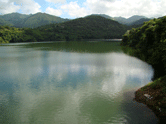 The Caribbean Area’s freshwater supply, shaped by rainfall, runoff and infiltration, is distributed unevenly across the landscape, throughout the seasons (rainy and dry), and from year to year. In many areas of Puerto Rico and the US Virgin Islands, concerns are growing about the adequacy of the available ground and surface water supply and the quality of the water to support intended uses.
The Caribbean Area’s freshwater supply, shaped by rainfall, runoff and infiltration, is distributed unevenly across the landscape, throughout the seasons (rainy and dry), and from year to year. In many areas of Puerto Rico and the US Virgin Islands, concerns are growing about the adequacy of the available ground and surface water supply and the quality of the water to support intended uses.
Nationally, agriculture is one of the largest users of surface water and groundwater, with irrigation being the greatest use. In 2000, almost 34 percent of the water withdrawn from surface water and groundwater was used in irrigated agriculture. In arid and semi-arid areas, including the Caribbean Area, crop production depends almost entirely on irrigation. Competition for water is increasing as a result of increased human populations.
In addition, agricultural runoff can impact water quality, carrying potential pollutants into the Nation’s streams, ponds, ground water, estuaries, and coastal waters. States and Territories have identified sediment and nutrients as the most extensive agricultural contaminants affecting surface water quality, while nutrients and agrichemicals are major concerns for groundwater.
Nitrogen and phosphorus are the primary nutrients that contribute to agricultural nonpoint source pollution. Excessive nitrogen and phosphorus in waterways can cause algal blooms that can lead to the development of hypoxic conditions, or low dissolved oxygen concentrations, unable to sustain aquatic life.
Caribbean Area Water Resources
Caribbean Area Watersheds